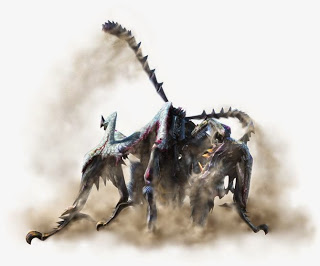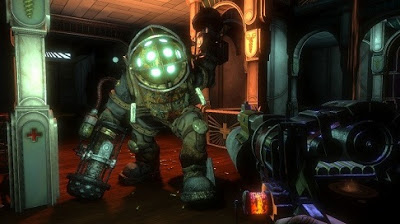

Back in 2012, the Museum of Modern Art acquired 14 video games that were exemplary interactive design. This move by MoMA was a huge step towards shifting public opinion on video games, specifically when it comes to the notion of video games as art. Indeed, there are many video games that changed the world, and the realm of art has not been left untouched.
Art is one of the few things in life that could arguably be considered 100% subjective. One man’s art flop is another man’s masterpiece. It’s strange to think of video games as art, especially since they carry the stigma of being time wasters, brain melters, and outlets for graphic violence.
But the realm of video games extends further than the usual suspects, and there are many gems out there that can evoke a true sense of emotion and awe. And if we get down to the heart of it, that’s what art is, isn’t it?
When I hear the terms “video game” and “art” used in the same sentence, this is the game that instantly pops up in my mind. After it released back in 2001, Ico was received well by critics and designers who applauded the game’s simplicity, visuals, and immersion, but the game never gained a huge audience in terms of playerbase. In that sense, Ico is a cult classic.
Like various schools of art that concentrate on minimalism, Ico is a Master’s level course on the subject in the world of games. The development team created the game over four years, all the while adhering to a “subtractive design”: constantly reducing gameplay elements until only the very core remained.
The result? Ico turned out to be a hauntingly simple story of a boy who rescues a girl from a castle. There isn’t much combat, and there aren’t many explosions, but there is plenty of exploration and the immersive qualities of the game are out of this world. Ico is a true artistic experience in every sense of the word.
In 2005, the creators of Ico released Shadow of the Colossus, which many believe to be the spiritual successor. Play the game for a few minutes, and you’ll immediately notice that it isn’t like most games. In fact, for most of the same reasons that Ico developed cult status, Shadow of the Colossus did as well.
“Detail in the midst of minimalism” is the name of the game here. The landscapes in Shadow of the Colossus are bare, barren, and minimal, yet the colossi are vividly detailed and so well-animated that they feel like living beings. There’s an atmosphere of loneliness to the game and that loneliness is the backbone of the game’s emotional journey.
If that weren’t enough to validate the game’s status as art, the soundtrack would be the final nail in the coffin of said validation. The musical score that drives Shadow of the Colossus is often recognized as one of the best video game soundtracks of all time.
Art is more than just creative expression. It’s a method to explore various facets of life in ways that others have yet to explore. Perspective, color, focus, composition – artists have been toying with reality for millennia to probe the boundaries of who we are. In Portal, Valve has managed to do that very same thing.
It’s one thing to study physics. It’s an entirely different thing to experience first-hand what our world might be like if the rules of physics could bend just a little bit. What if we could create dimensional portals that instantly moved us from one space to another? What would it feel like to run around and live in an environment where that was possible?
But even more than that, the Portal package is made complete with strong writing, compelling characters, and beautiful art direction. Anyone who has beaten Portal will remember GLaDOS to their grave. The little turret drones are hilarious, the visuals are simple, yet it defines and guides the whole gaming experience. Portal deserved every ounce of hype it received.
Heavy Rain is less of a video game and more of an interactive movie, but that only goes to show just how powerful and moving a video game can be. It’s the interactivity that differentiates between a “passive spectator” and an “active player,” and that difference is what makes Heavy Rain such a powerful emotional video game experience.
Most of the gameplay in Heavy Rain is split into scenes where the player interacts with other objects or characters. That might sound boring, and it would be if it weren’t for the strong writing and direction that leads the story from start to finish. Story events rely on the player’s input, and the characters can die along the way if the player makes a mistake, dramatically increasing the stakes and tension.
Literature is art, and Heavy Rain is interactive literature come to life. It stands as one of the strongest examples of the power of writing in video games.

On the surface, Dwarf Fortress appears to be the antithesis of art. Thanks to its dated ASCII graphics, maybe gamers have turned their noses up at it, disgusted by how “ugly” it is and how “boring” it looks. But, as with most things, appearances can be deceiving. Beneath the harsh exterior of Dwarf Fortress is a complex, deep, and wonderful game.
What is it about this game that makes it so artful? It’s the beautiful possibility space of emergent gameplay that you’ll find buried within. The basic premise of the game is that you have a band of dwarves and your goal is to build a fortress and survive. The fun comes from the sheer number of different things you can actually do and the fact that failure is to be expected. The game’s motto is “Losing Is Fun” for a reason.
Dwarf Fortress is an open-ended game much like Minecraft, but it has cheaper graphics and much deeper gameplay. Play Minecraft if you want to build stuff with virtual LEGO. Play Dwarf Fortress if you want to simulate an entire virtual universe. Dwarf Fortress taps into the human need to survive and maintain order, and it proves along the way that graphics do not a video game make.
Dwarf Fortress is a cousin of the roguelike RPG genre, which in itself is a testament to the fact that games can be art.
Do you believe video games can be art? If not, please explain? If so, what other games that weren’t included here do you believe exemplify this idea of “video games as art”? Please share with us in the comments!
Image Credits: Original: ico xDDD by chisaikame




 Monster Hunter 4U defeat Camouflaged Nerscylla, White Monoblos
Monster Hunter 4U defeat Camouflaged Nerscylla, White Monoblos GTA V: GTA Online Heists Mega Guide: How To Start Heists, Setup Missions, Awards, Replaying Heists & Adversary Modes
GTA V: GTA Online Heists Mega Guide: How To Start Heists, Setup Missions, Awards, Replaying Heists & Adversary Modes 10 Most Popular video games Based on Books (2015)
10 Most Popular video games Based on Books (2015) Alice: Madness Returns Achievements list for Xbox 360
Alice: Madness Returns Achievements list for Xbox 360 Is Your Child a Hacker? The British Authorities Think So
Is Your Child a Hacker? The British Authorities Think So